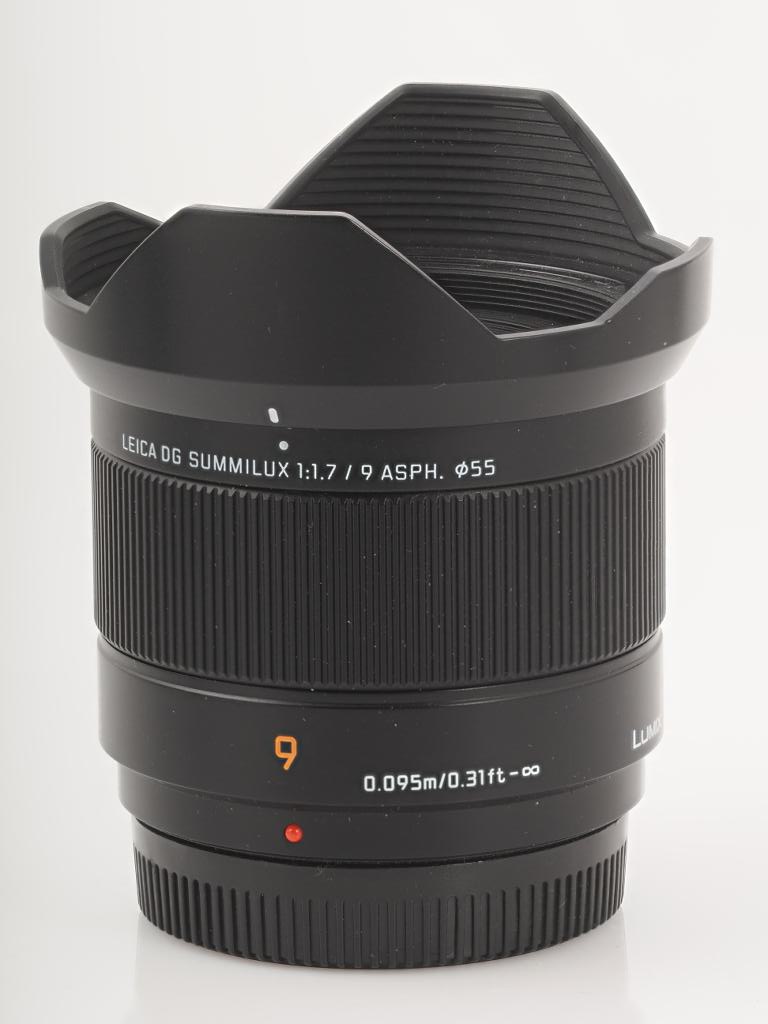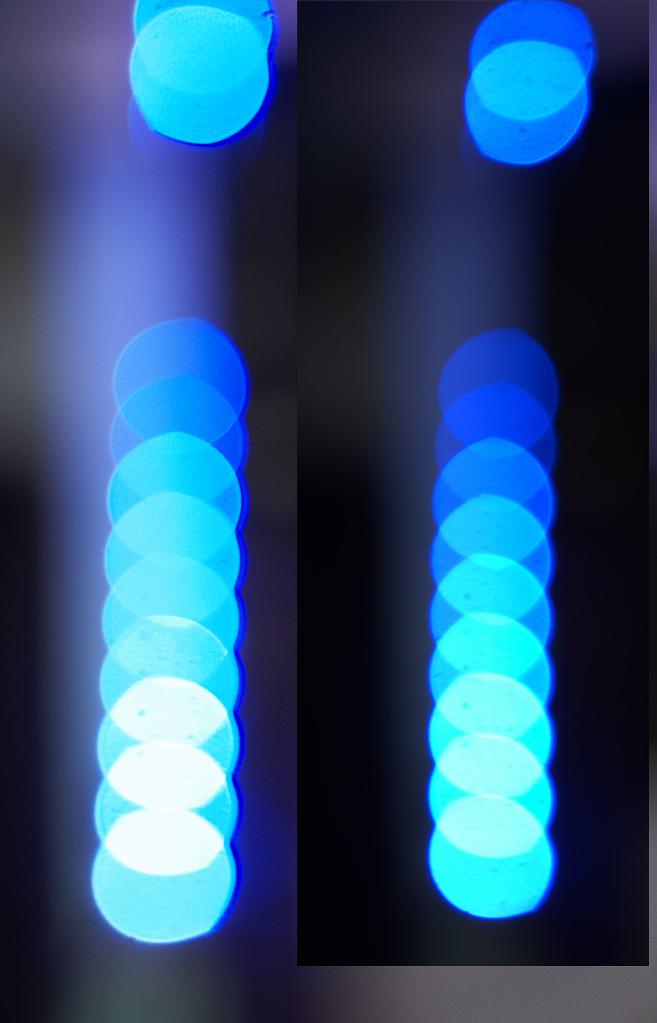
I had already posted a few photos from the 9mm Panaleica. And as announced, I’m now only looking at the performance on an Oly.
First of all, what comes out of the lens:

And no, the painters in Rocksdorf didn’t have a few too many crates of beer. This is what comes out of the camera:

The loss of resolution in the corners is of course clearly visible. However, it is not particularly sharp open aperture anyway. The CAs are removed pretty well by the camera in the JPG – which leaves ugly white stripes at the edges – the camera can’t do anything about the purple fringing.
The autofocus is fast – anything else would be an absolute poor result for a 9mm on mFT.
The optical quality – you can see it. It relies completely on digital correction and sharpening. Beautiful is different, but for those who like it, it’s the best.
The haptic quality: it is very light and – especially in contrast to the Nisi – looks like a toy.
It has a lens speed of 1.7 and that’s a bank. That also means that you can do something like this:

Whether you find the bokeh pretty is another matter, but with 2.8 it doesn’t work so well, of course.
The lens has a slightly pronounced cats-eye bokeh by default, which is corrected to “almost round” by the electronic correction. The correction increases the halo around the outside of the bokeh and hardens the edges of the diffusion disks – because the camera thinks that this is a contrast edge that needs to be sharpened.

Here I have copied a section from the RAW into the JPG Ooc on the right, as it is developed without lens and camera corrections. You can see the change in the bokeh and also how the slices are “blown up” by the lens correction. The fact that half of a slice is missing at the top is simply a consequence of the fact that the correction cuts off the top heavily. You can see this in the pictures above.
My personal conclusion: you have to want it.
And here’s a bit of outdoor:

Vielen Dank für die intensive Analyse der UWW!
Habe selbst das Panaleica 9mm und das 6mm Laowa. Die Ergebnisse kann ich komplett bestätigen.
Beide Linsen haben eine hervorragende Nahgrenze und gute Schärfe – wobei für mich das Laowa den besseren Job fürs Geld macht. Auch das Panaleica ist für Lichtstärke und Abdichtung nicht überteuert. Hier nerven aber auch im Gegenlicht-Alltag die Flares und Fringings. Das Objektiv ist dann eher für sonnenfreies Wetter und Innen im Einsatz, liefert hier da ordentlich ab.
Das Laowa ist mit großartigen Blendensternen und guter Korrektur ein Schnäppchen, das keinen Platz in Foto- oder Hosentasche wegnimmt und immer dabei ist, wenns nicht regnet.
Schade, das wollte ich mir eigentlich zulegen für unterwegs als Ergänzung zum Reisezoom. Lichtstark, Autofokus und Spritzwasserschutz… Traurig, was heute unter dem Namen Summilux vermarktet wird.
“… Namen Summilux vermarktet”
Die Bezeichnung “Summilux” steht für hohe Lichtstärke (lateinisch für “höchstes Licht”). Hat nichts mit der optischen Qualität wie Schärfe und Verzeichnung zu tun.
Das war halt mal anders! Da waren Namen wie Summilux, Summicron etc. automatisch auch Qualitätsgaranten. Ist aber zugegebenermaßen schon sehr lange her. War ein anderes Jahrtausend .
Ich mag das PanaLeica 9mm sehr für Aufnahmen vom Sternenhimmel und Milchstraße. Auch in den Bildecken werden Sterne noch halbwegs punktförmig abgebildet, was nicht bei jedem Objektiv der Fall ist. Die Lichtstärke und der AF (mit SternenAF) passen auch gut zum Anwendungszweck.
Und als stille Leserin hier möchte ich mich auch mal für die vielen interessanten Beiträge hier bedanken!
Ich denke mal, es ist nicht umsonst sehr verlockend für die Hersteller, Linsen digital zu “optimieren”. Das spart jede Menge teure, optische Korrekturen im Glas. Und das ist dann vermutlich deutlich lukrativer, monetär gesehen.
Moin,
– wenn ich Panasonic-Entscheider wäre würde ich meine Objektive auch auf Panasonic Cams hin optimieren lassen.
Was mit den Kameras eines (vielleicht sowieso bald historischen) Mitbewerbers herauskommt wäre mir ziemlich latte.
-Auf den ach so tollen Linsen mit den Namen “Summicron” und “Summilux” steht auch Leitz drauf und nicht Panasonic. Ausserdem ist da das Preisschild für ein bis 2 Stellen breiter. You can’t have it all.
Schiebt die Raws durch DXO und 95% der Kritikpunkte sind ausgeräumt. Für die letzten 5% und/oder OOC müsstet ihr halt richtig tief in die Tasche greifen.
sehe ich auch so – ein paar “cron” und “lux” habe ich noch aus M-Zeiten liegen, heute unbezahlbar!!
Wenn ich die Mängel via DXO beseitigen kann, wäre ich zufrieden, aber ob es auch die oft kritisierte, massive Randunschärfe beseitigt ?!
Momentan sieht es für mich so aus, als wenn ich für die seltene Nutzung auch mein randscharfes Olympus 9-18 mFT weiter nutzen kann…
Und die manuellen Nisi etc. sollen auch nicht immer einfach zu fokussieren sein.. bin mal gespannt, was Reinhard noch herausfindet :-))
Auf jeden Fall, wie immer bei ihm, voll aus der Praxis und nix von den dämlichen Ju Tubern…weiter so!
Gruß
Rainer (lese seit Jahren auch nur mit)
Hallo,
den Test von Reinhard fand schon sehr interessant und das Ergebnis durchaus etwas überraschend.
Aber ich denke, Dirk hat die Situation mit seinem Kommentar auf den Punkt gebracht.
Und ganz nebenbei, innerlich hoffe ich, dass er mit seinen Nebensatz “vielleicht sowieso bald historischen Mitbewerber” ja doch daneben liegt.
Vorweihnachtliche Grüße in die Runde!
Jens-Uwe
Dann verwendest Du aber nur unkorrigierte RAWs. Da ist die brutale Tonne natürlich von Vorteil. Aber da kann man dann auch gleich ein 1,8er Fish nehmen.